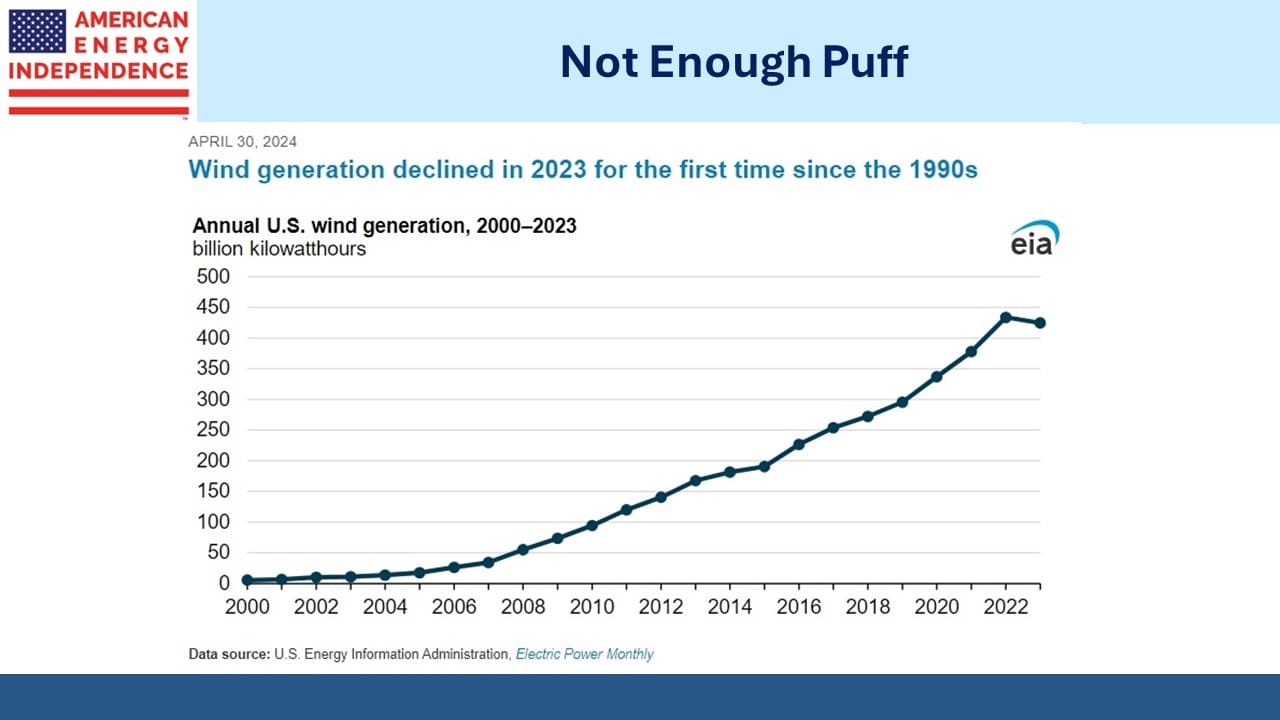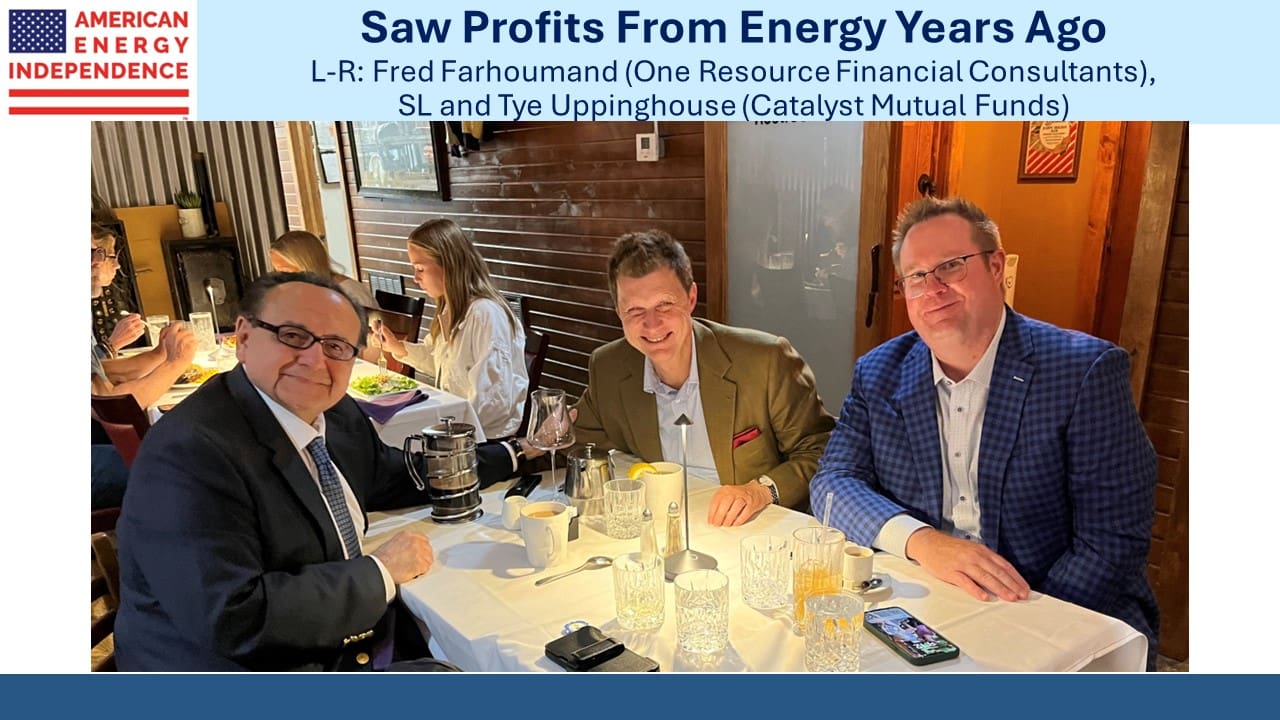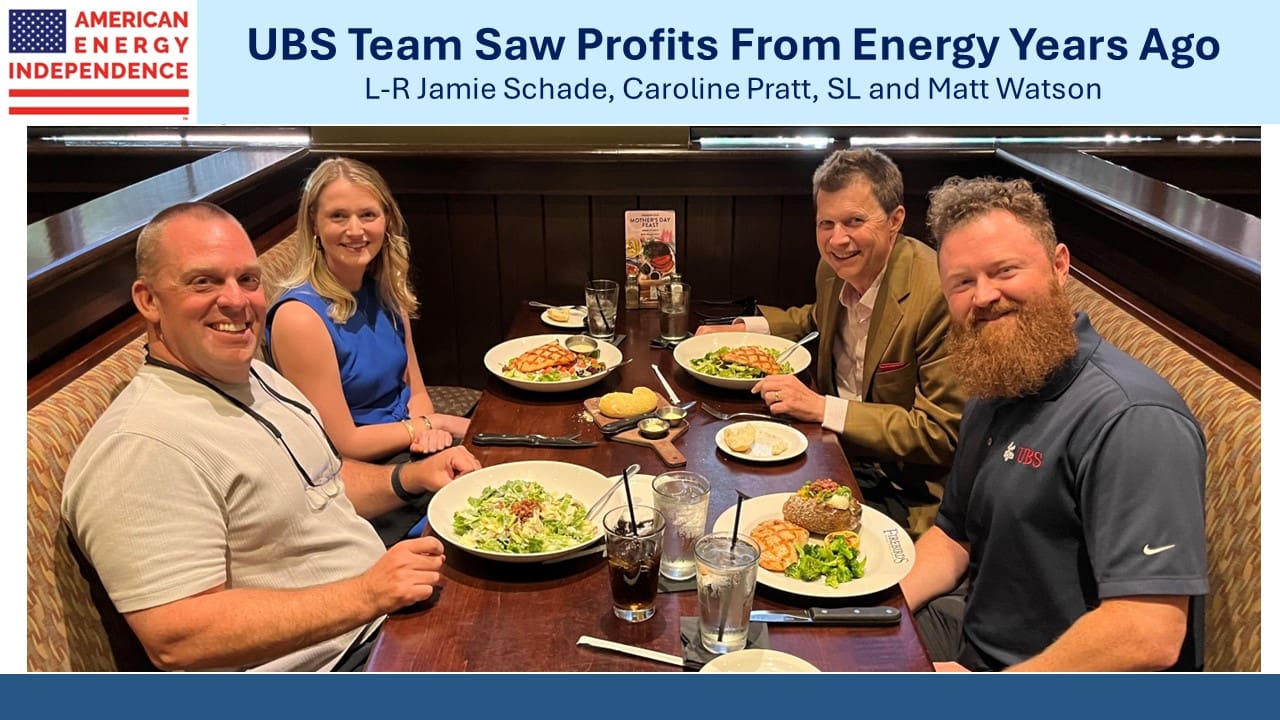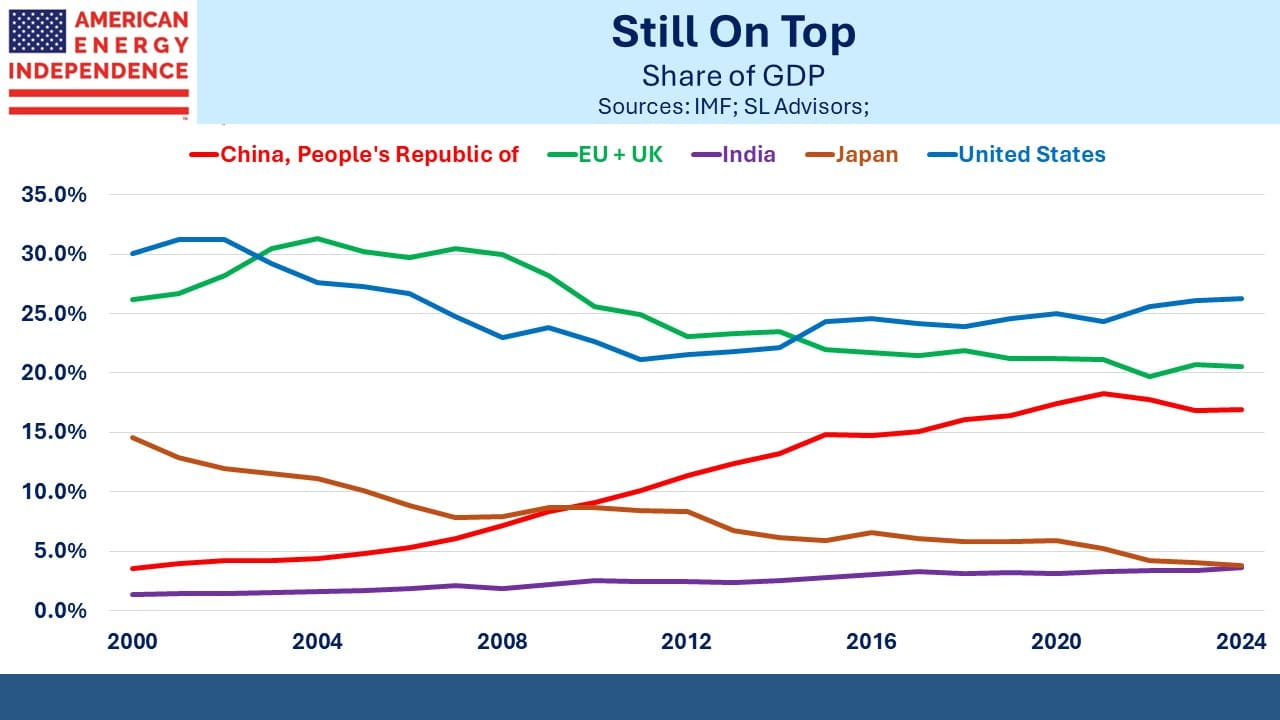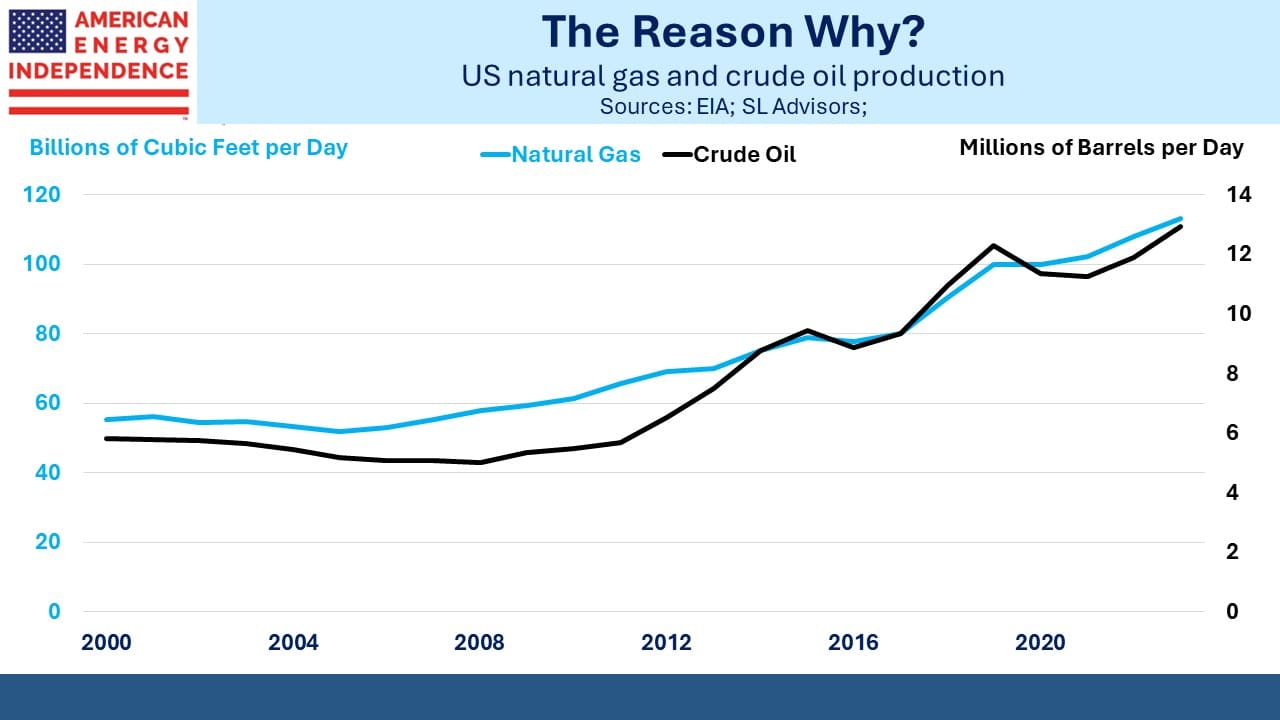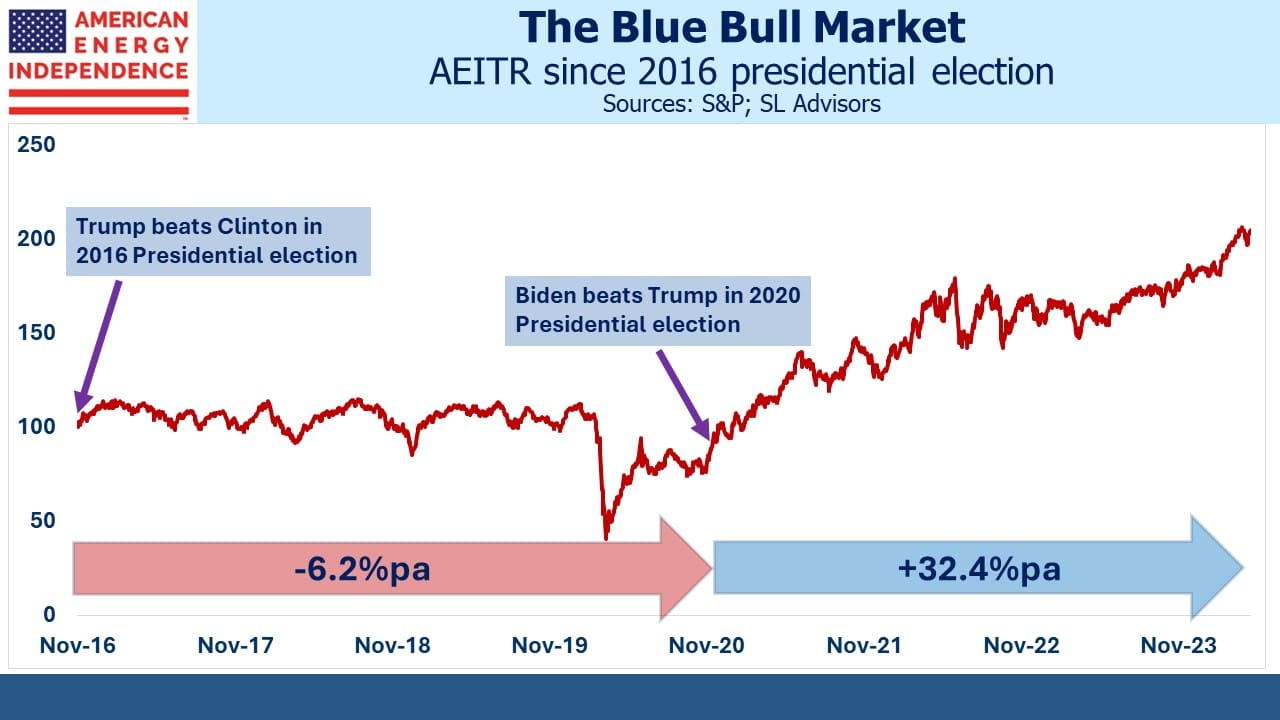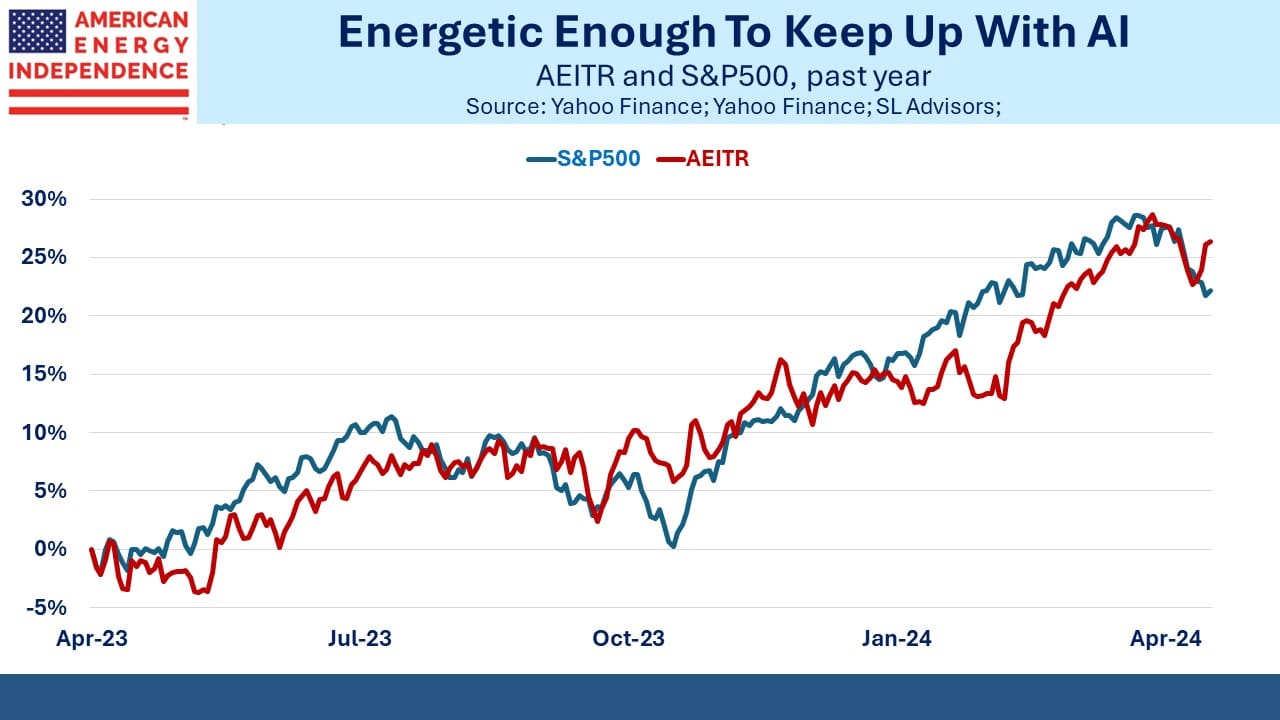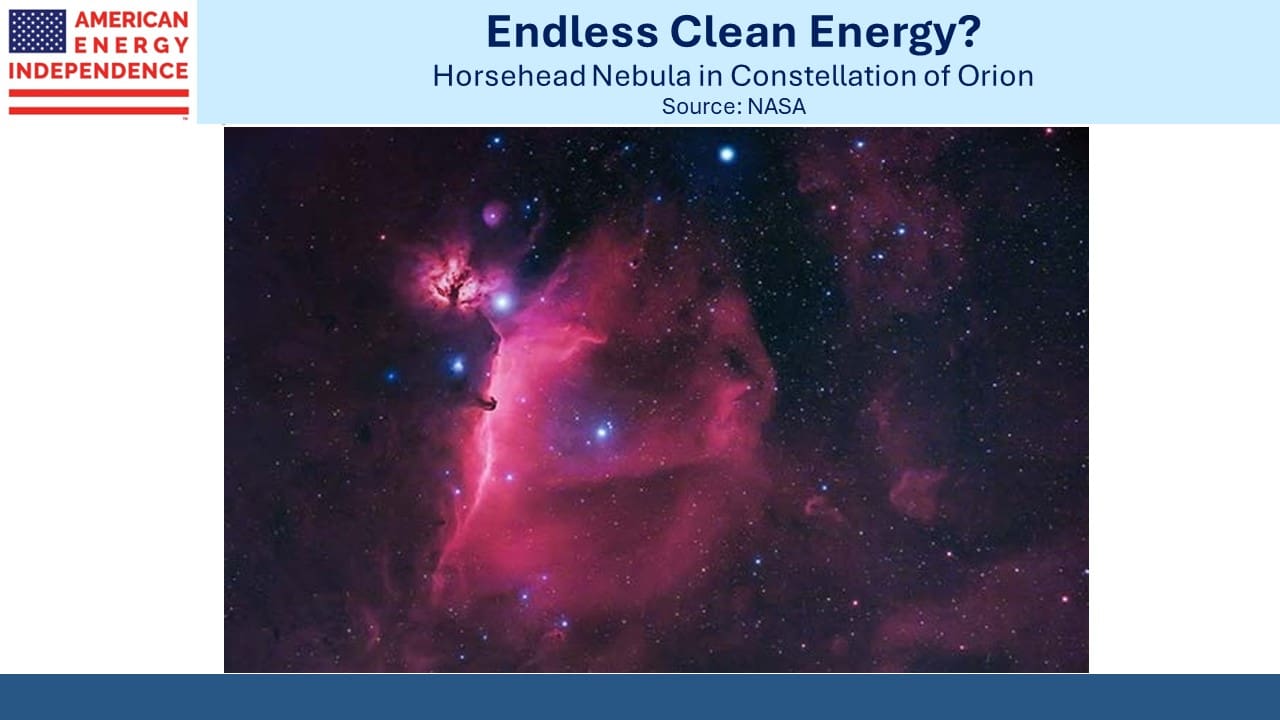Discussing Energy In America’s Heartland

I traveled through Indiana last week. A day and a half of meetings in and around Indianapolis were followed by a drive south for an afternoon at Churchill Downs in Kentucky. If you’re lucky enough to be invited to a Jockey Club hospitality suite, a good time is guaranteed. Tye Uppinghouse, our Catalyst Mutual Funds regional partner, was once again a gracious host. I concluded my trip in Miamisburg, OH.
I always enjoy meeting our clients and prospects. America’s heartland is conservative and welcoming. The Hoosier state has yet to legalize medical marijuana, and one advisor I met predicted recreational use was at least a decade away.
Recent earnings news from pipeline companies has been positive. Enterprise Products Partners raised their distribution by 5.1%, now 1.7X covered by distributable cash flow. Oneok raised 2024 guidance due to strong volumes in natural gas and synergies from last year’s acquisition of Magellan. Earlier this year they announced a 3% dividend increase.
A week ago, Targa Resources raised their dividend by 50%.
These three companies provided current evidence of the industry’s steady return of cash to shareholders. Payouts that yield around 6% are growing at 3-5%, providing a 9-11% total return. Share buybacks add another 1-2%. It’s a story that resonated strongly with many of the investors I met last week. Energy has been an overlooked sector for a long time despite strong performance. Morgan Stanley just reintroduced a 2% allocation to midstream for client portfolios.
The connection with the AI boom came up in most of my discussions. A WSJ story last week said, “in Virginia’s data-center alley, rising power demand means more fossil fuels.” This means more natural gas, increasing the use of America’s abundant, reliable resource that generates half the emissions of coal.
The article went on to add, “Wind and solar can’t serve data-center demand around the clock, so growth will need to be supplemented by natural-gas-fired power generation, said Arshad Mansoor, chief executive of the nonprofit Electric Power Research Institute.”
Last year, output from wind turbines fell 2.1% even though capacity was up 4.4%. The weather is a fickle mistress. Renewables’ potential output has a tenuous relationship with power actually delivered.
Indiana has a realistic view of EVs – their 4.5% market share is less than half the US average. This is because virtue signaling is refreshingly absent in this solidly red state. Ford has delayed a second EV battery plant in Kentucky after finding tepid demand for electric light trucks. I suspect many of the people living in southern Indiana’s wide open farm country could have predicted as much.
I didn’t find anyone excited about the inconvenience of having to recharge their car for 30 minutes or more at a time, and plenty commenting on the declining value of used EVs. In Indiana they just want to get where they’re going without designing their journey around charging stations.
Some people have amazing stories to tell. I had the opportunity to finally meet one of our long-time investors Fred Farhoumand, whose family fled Iran when he was a young boy prior to the 1979 revolution. He and his brother Ali have built One Resource Financial Consultants into a successful investment business in Fort Wayne, IN.
Fred’s clients have benefited from his well-timed investments in the midstream sector. We enjoyed a steak dinner together in Muncie where the waitress was honest enough to say she hadn’t tasted several of the entrees because she couldn’t afford them.
Hopefully after our visit she could.
Perhaps as an immigrant myself I love to hear the success stories of others. Francis Almeida of Moneyline Wealth Management grew up in an Indian orphanage, won a scholarship to study hotel management in Switzerland and worked in the cruise industry before joining Moneyline 28 years ago. He began life with very little and has achieved so much. Francis would probably have been successful anywhere, but that he chose America shows why this great country is so richly endowed with driven entrepreneurs.
It’s also why Clare Lombardelli, the OECD’s chief economist, recently said the US economy was looking “remarkably strong”, with increasing evidence of it pulling away from European economies.
I was overdue to finally meet in person with Jamie Schade, along with his colleagues Caroline Pratt and Matt Watson. Jamie runs a team with Mark Henestofel at UBS in Miamisburg, OH that correctly identified the opportunity in midstream energy infrastructure back in 2020.
Unsurprisingly, we agreed on much. The energy transition will play out over generations, boosting demand for all forms of energy. Balance sheets are strong and dividend coverage high. Climate extremists still impede new pipeline construction which is boosting free cash flow.
Hug a protester and drive them to their next event.
EV demand remains weak – there are certainly few on the roads in this part of the country.
Hybrids seem like a pragmatic solution – an EV without range anxiety.
Growing power demand from data centers is good for natural gas.
Our dire and worsening fiscal outlook makes a return to 2% inflation unlikely.
In our opinion this sector checks all the boxes.
I found many investors who are underweight energy are concluding it’s worth a closer look. Those with exposure are happy with the results.
We have three have funds that seek to profit from this environment:
Energy Mutual Fund Energy ETF Real Assets Fund


